2018 年 4 月雅思真题回忆及解析
学而不思则罔,在掌握知识点之后将其运用在解题中才是学习的好方法。无忧考网搜集整
理了 2018 年 4 月雅思真题回忆及解析,希望对大家有所帮助。2018 年 4 月举行了 4 场考试,
时间分别为 4 月 7 日、4 月 14 日、4 月 21 日、4 月 26 日。以下内容仅供参考。
4 月 7 日雅思口语真题回忆:
一、考试概述:
以下为 4 月份本场考试高频话题,请考生们扎实准备。
1. Describe a famous athlete you know
2. Describe an unusual meal you had
3. Describe a toy you had in your childhood
4. Describe a historical period that you are interested in
5. Describe a situation when you had to be polite
二、具体题目分析:
Describe a famous athlete you know
You should say:
Who this person is
How you know this person
What he or she achieved
And explain why he or she is famous
As for a famous athlete I know, I would like to talk about Fu Yuanhui who is
a swimmer from Hangzhou China, and the first time I knew her was in 2016 Olympic
games. One of her interview videos was quite interesting because her responses were
hilarious.
In that video, when Fu was told that she was qualified for the final, Fu pulled
a comically exaggerated face and declared that “I have used all my prehistorical
power to swim.” Prehistorical power is a phrase originates from a Chinese fantasy
drama called “the journey of flower”, and in this situation, this phrase is quite
suitable and hilarious. When asked what her hopes were for the final, Fu said that”
no expectations, I’m very satisfied now.” That’s how she began to rock the Internet
and social media. Pitifully, she didn’t win a gold medal in the 100-meter backstroke
final, instead, she eventually won a bronze medal, but that hasn’t reduced the
affection from her fans.
I think the reason why Fu is so popular on the Internet is that she interpreted
the Olympic spirit in an untraditional way which is challenging herself and enjoying
the game. That’s the spirit that we Chinese youngsters now look up to.
4 月 7 日雅思写作真题回忆:
小作文
地图题
�
大作文
题目类别:社会类
提问方式:观点类
考试题目:
Some people think the most important thing about being rich is helping other people.
To what extent do you agree or disagree?
TASK 2
题目
Some people think the most important thing about being rich is helping other people.
To what extent do you agree or disagree?
4 月 7 日雅思阅读真题回忆:
Passage 1:
题目:第一座城市的变革发展
题型:6 判断题+7 填空题
文章大意: 第一部分:乌尔城的历史起源、地址、当地人的生活习惯等
第二部分:寺庙的作用
第三部分:乌尔城的文化如何得以保留
参考答案:
1-6) 判断题
1.NOT GIVEN 定位在第二段开头,乌尔城在伊拉克仍有少量剩余信息,但是没有说是 physic
remains
2.FALSE
3.TRUE
4.FALSE
5.TRUE 同意替换,Basis 替换了 improvement
6.FALSE Relatives 亲属。文中说缺粮的时候大家会走出家庭和邻居合作。
7-13) 填空题
7.待补充
8.pyramid。当地的寺庙以金字塔的形状建造
9.待补充
10.storeroom.
11.banks.寺庙可以扮演银行的角色,在经济困难的时候,提供借贷服务。
12.clay.当地人的文字写在湿的 clay 上得以保存。
13.fires.
(答案仅供参考)
参考文章:
City of Ur
Located near the modern town of Nasiriya in far southern Iraq, on a now-abandoned
channel of the Euphrates river, Ur covered about 25
hectares (60 acres), surrounded by a city wall. When British archaeologist Charles
Leonard Woolley excavated in the 1920s and 1930s, the city was a tell, a great
artificial hill over seven meters (23 feet) high composed of centuries of building
�
and rebuilding mud brick structures, one stacked on top of another.
Southern Mesopotamian Chronology
The chronology of Southern Mesopotamia is simplified somewhat from that suggested
by the School of American Research Advanced Seminar in 2001, based primarily on
pottery and other artifact styles and reported in Ur 2010.
The earliest known occupations at Ur city date to the Ubaid period of the late 6th
millennium BC. By about 3000 BC, Ur covered a total area of 15 ha (37 ac) including
early temple sites. Ur reached its maximum size of 22 ha (54 ac) during the Early
Dynastic Period of the early 3rd millennium BC when Ur was one of the most important
capitals of the Sumerian civilization.
Ur continued as a minor capital for Sumer and succeeding civilizations, but during
the 4th century BC, the Euphrates changed course, and the city was abandoned.
Living in Sumerian Ur
During Ur's heyday in the Early Dynastic period, four main residential areas of
the city included homes made of baked mud brick foundations arranged along long,
narrow, winding streets and alleyways.
Typical houses included an open central courtyard with two or more main living rooms
in which the families resided. Each house had a domestic chapel where cult structures
and the family burial vault was
kept. Kitchens, stairways, workrooms, lavatories were all part of the household
structures.
The houses were packed in very tightly together, with exterior walls of one household
immediately abutting the next one. Although the cities appear very closed off, the
interior courtyards and wide streets provided light, and the close-set houses
protected the exposure of the exterior walls to heating especially during the hot
summers.
Royal Cemetery
Between 1926 and 1931, Woolley's investigations at Ur focused on the Royal Cemetery,
where he eventually excavated approximately 2,100 graves, within an area of 70x55
m (230x180 ft): Woolley estimated there were up to three times as many burials
originally. Of those, 660 were determined to be dated to the Early Dynastic IIIA
(2600-2450 BC)period, and Woolley designated 16 of those as "royal tombs".
These tombs had a stone-built chamber with multiple rooms, where the principal royal
burial was placed. Retainers--people who presumably served the royal personage and
were buried with him or her--were found in a pit outside of the chamber or adjacent
to it.
The largest of these pits, called "death pits" by Woolley, held the
remains of 74 people. Woolley came to the conclusion that the attendants had
willingly drunk some drug and then lay down in rows to go with their master or
mistress.
The most spectacular royal graves in Ur's Royal Cemetery were those of Private Grave
800, belonging to a richly adorned queen identified as Puabi or Pu-abum,
approximately 40 years old; and PG 1054 with an unidentified female. The largest
death pits were PG 789, called the King's Grave, and PG 1237, the Great Death Pit.
�
the tomb chamber of 789 had been robbed in antiquity, but its death pit contained
the bodies of 63 retainers. PG 1237 held 74 retainers, most of which were four rows
of elaborately dressed women arranged around a set of musical instruments.
Recent analysis (Baadsgaard and colleagues) of a sample of skulls from several pits
at Ur suggests that, rather than being poisoned, the retainers were killed by blunt
force trauma, as ritual sacrifices.
After they were killed, an attempt was made to preserve the bodies, using a
combination of heat-treatment and the application of mercury; and then the bodies
were dressed in their finery and laid in rows in the pits.
Archaeology at the City of Ur
Archaeologists associated with Ur included J.E. Taylor, H.C. Rawlinson, Reginald
Campbell Thompson, and, most importantly, C. Leonard Woolley. Woolley's
investigations of Ur lasted 12 years from 1922 and 1934, including five years
focusing on the Royal Cemetery of Ur, including the graves of Queen Puabi and King
Meskalamdug. One of his primary assistants was Max Mallowan, then married to mystery
writer Agatha Christie, who visited Ur and based her Hercule Poirot novel Murder
in Mesopotamia on the excavations there.
Important discoveries at Ur included the Royal Cemetery, where rich Early Dynastic
burials were found by Woolley in the 1920s; and thousands of clay tablets impressed
with cuneiform writing which describe in detail the lives and thoughts of Ur's
inhabitants.
Passage 2:
题目:Bonds 债券和利息
题型:7 小标题配对题+2 多选题+4 填空题
文章大意:
第一段:债券的历史起源
第二段:债券对政府的作用
第三段:债券价格受通货膨胀、利率变化的影响
第四段:待补充
第五段:不同的债券市场类型
第六段:有时候债券不到期就被收回
第七段:欧盟国家因为使用同一种货币对某一国家的经济影响
参考答案:
14-20) 小标题配对题
14.vi.
15.vii.
16.ii.
17.iv。
18.i。
19.viii。
20.iii。
21-22) 多选题
21.A。为重工程基础设施建设筹集资金
22.D。pension fund 以此盈利。
�
23-26) 填空
23.salt monopoly。古代一个国家在盐垄断的基础上发行债券
24.secondary market。是说 pension fund 只能在二级市场进行债券交
易
25.interest rate。
26.quantitative easing。
(答案仅供参考)
参考文章:
Bond Investing
Bonds have been around for thousands of years, dating back to as far as 2400 BC.
Throughout the centuries, the use of bonds has grown exponentially, with both
governments and companies using these securities for crucial funding. In this piece,
we take a brief, but important, look at the history of bond investing, focusing
in on the U.S. bond market.
The first recorded bond in history dates back to 2400 B.C. – a stone discovered
at Nippur, in Mesopotamia, now present-day Iraq.
This particular bond guaranteed the payment of grain by the principal and the surety
bond guaranteed reimbursement if the principal failed to make payment. Corn was
the currency of that time period.
The first ever government bond was issued by the Bank of England in 1693 to raise
money to fund a war against France. These first bonds were a mix of both lottery
and annuity. An obvious trend appears across
the globe, with more and more countries following England’s lead and issuing
government bonds to fund wars. In the U.S., the case was no different. The first
U.S. government bond begins with the Revolutionary War, when the country issued
its first bonds to raise money to fight the war. The Treasury offered loan
certificates, the equivalent of bonds. In that year, private individuals bought
more than $27 million in bonds to finance the war.
The first U.S. Treasury bonds, which were initially called “Liberty Bonds,” were
issued to fund World War I. In 1917, the First Liberty Loan Act authorized the issue
of $5 billion worth of bonds at 3.5 percent interest three weeks after the United
States declared war on Germany. Long-term government bonds proved to be a safe haven
from the stock market collapse in 1929, a year in which they returned 3.4%. Following
the crash and the resulting depression, U.S. bonds logged in impressive returns.
During the “Eisenhower Recession,” which was from 1955-1959, long-term government
bond investors lost money four of the five years.
During this time frame, rates were steadily rising, putting pressure on government
bonds.
During the late 1970s and through the ’80s, non-investment grade public companies
were allowed to issue corporate debt; this followed after bonds suffered deep losses
following two oil shocks, rampant inflation, and rapidly rising rates.
Up until this point, only investment grade corporations were allowed to issue public
bonds, but if a company’s rating happened to fall after the bond was issued, these
were still allowed to trade and were called “fallen angels.”
�
In 1977, however, Bear Stearns underwrote the first new-issue junk bond in decades.
By 1983, more than one-third of all corporate debt was non-investment grade. By
1989, the junk-bond market grew to $189 billion.
In 1994, the unexpected rise in the Federal Reserve’s short-term rate sparked a
massive selloff in bonds, which was exacerbated by the use of derivatives and
leverage.
It’s estimated that $1 trillion in bond assets were lost.
Though one of the first derivatives of debt came in the ’80s, with the creation
of collateralized debt obligations, these products remained fairly obscure until
after 2000. Soon enough, CDOs became more popular, more complex and exponentially
riskier, even though these securities often held high credit ratings.
From 2000 to 2007, worldwide fixed income exposure doubled in size; responding to
increased demands for bond-like securities, Wall Street continued to pump out new
derivatives, like mortgage-backed securities.
After the housing bubble burst, fixed income financial derivatives like CDOs and
MBS’s took a tremendous hit. Owners of these derivatives were suddenly bleeding
money, and stuck with toxic assets no one would touch. Alongside non-investment
grade bond markets, equity markets also tumbled, forcing U.S. regulators and the
Federal Reserve to step in and try to stop the financial crisis.
Although bond funds are attractive to investors because of their relative stability
and diversification, many of the more conservative offerings in this category offer
little or no protection from inflation.
Simply put, inflation represents the constant increase in the price of goods and
services in the economy. Inflation has historically grown at different rates during
different periods; for example, it was extremely high under the Carter
Administration in the early 1980s, but has slowed to a crawl in recent years. The
prices of some goods and services, such as managed health care and higher education,
have also grown much more quickly than other sectors of the economy.
But inflation in general serves to reduce the purchasing power of consumers in all
areas over time.
This means that a dollar in 10 years will buy less than it can today. Therefore,
a bond fund that pays a steady rate of interest that remains at the same level over
time will provide its investors with progressively less spending power in the future.
Investors who want to increase their purchasing power over time with bond funds
can therefore look to the following sectors of the fixed income market.
Passage 3:
题目:
题型:6 单选题+4 句子结尾配对题+4 判断题
题号:新题
文章大意:待补充
参考答案:
27-32) 单选题
27.C。
28.D。
�
29.C。
30.D。
31.B。
32.C。
33-36) 句子结尾配对题
33.C。
34.E。
35.D。
36.B。
37-40) 判断题
37.NOT GIVEN。文中没有说哪个人的研究获得更多或更少的支持
38.YES。同意替换,popular 替换了 common
39.NOT GIVEN。
40.NO。关亍开车的研究结果并不让人惊讶。
(答案仅供参考)
4 月 7 日雅思听力真题回忆:
Section 1
场景: 酒店咨询
题型:10 表格填空
参考答案:
1-10) Table Completion
1 there is a big screen provided in the ball room
2 please contact the manager for the booking requirements
3 popular activity: cooking
4 you can see the forest nearby
5 recommend month to go is June
6 special: get a rose
7 performance by a famous singer
8 local band will be there to do live music
9 will organize an exhibition for local arts
10 the earliest day to go exhibition this Friday (答案仅供参考)
Section 2
场景: 主题公园
题型:6 选择 4 匹配
参考答案:
11-16) Multiple Choice
11 when does ride open in the park open?
A 9.00 B 9.30 C 10.00
12 how much does the family fast line track ticket cost if booked online?
A 78 B 95 C 113
13the suggestion of lake in the park water-ride 需要注意什么? A camera B go there
in summer C take waterproof clothes
�
14rollercoaster 特别之处?
A its material B the changing speed C family design 15 what should they bring to
eat?
A buy some snack B sit in a cafe C take some food and go for picnic 16 what the
activity recommond for one day trip? C stay and see fireworks
17-20) Matching
17 cowboy show ride - not wait at a long queue line
18 driving school ride - only for small child
19 rollercoaster - the most frightening one
20 magic show ride - some surprise at the end (答案仅供参考)
Section 3
场景:讨论实验课
题型:6 匹配,4 地图
参考答案:
21 course of steam engine - b) too difficult
22 breakfast cereal - e) cheap
23 bounce balls - c) easy to understand
24 paper making - a) very boring
25 tie water experiment - h) take longer than usual to do
26 extract glue from milk - f) immediate result
27-30
27 metal container - F
28 integral refiner - D
29 drip tip - B
30 pottery container - C
(答案仅供参考)
Section 4
场景:绘画和摄影
题型:10 表格填空
参考答案:
31-40) Completion
31expensive
32painting
33realistic
34enlargement
35times
36outside the studio
37glass
38new material
39light
40approaches (答案仅供参考)
4 月 14 日雅思口语真题回忆:
�
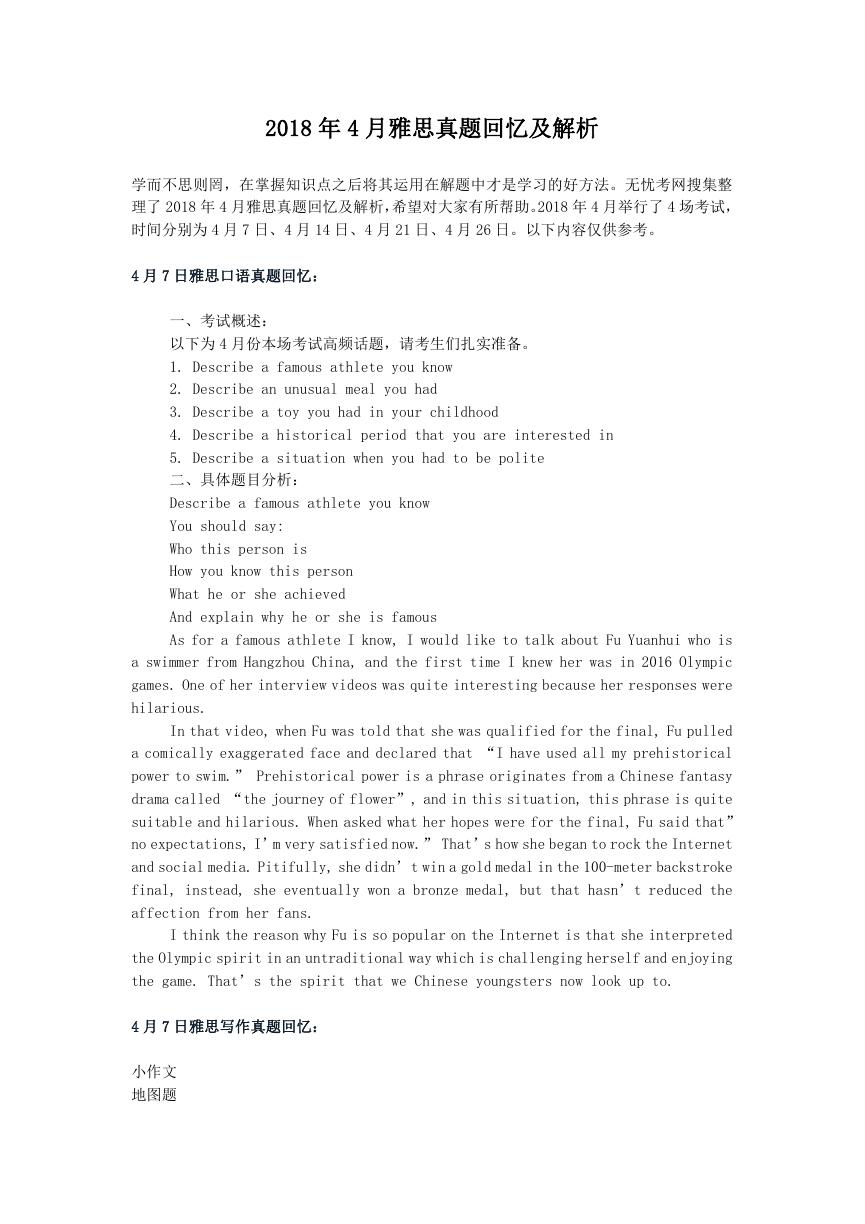
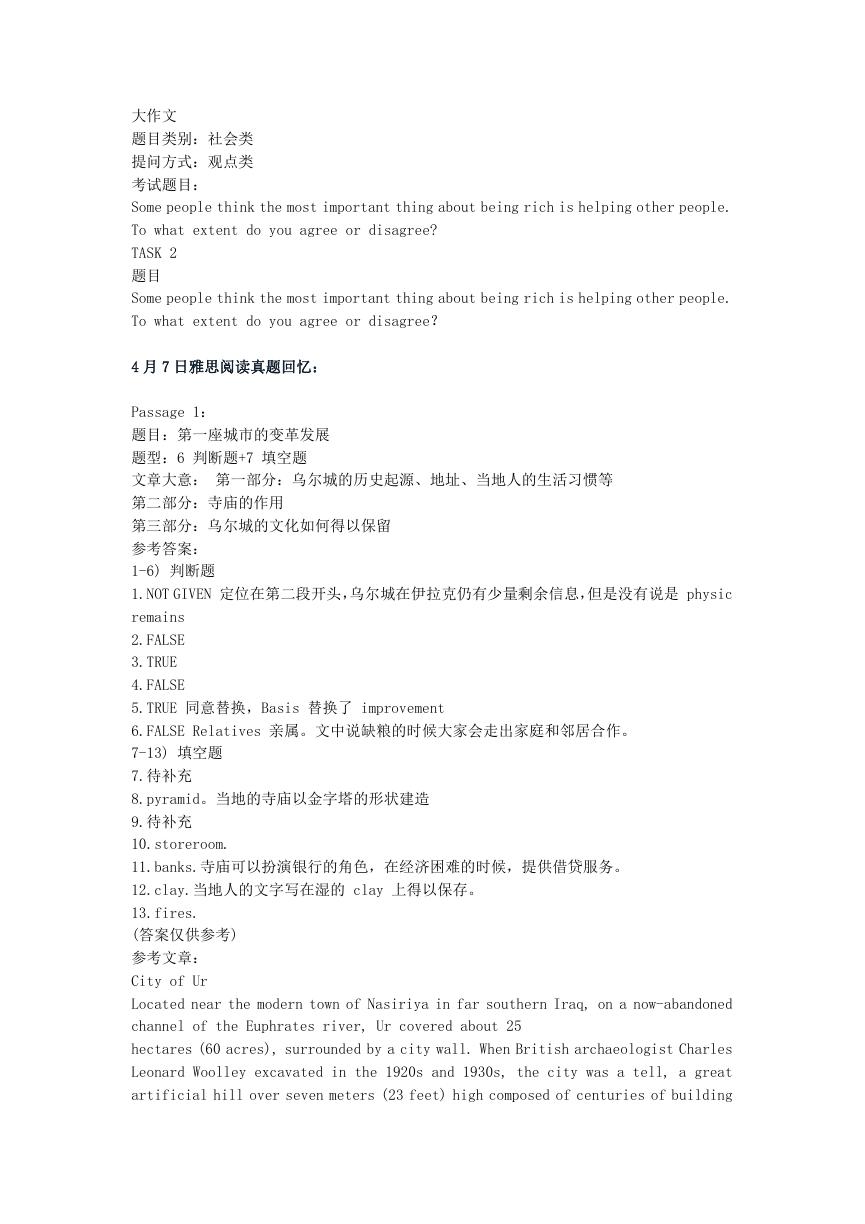

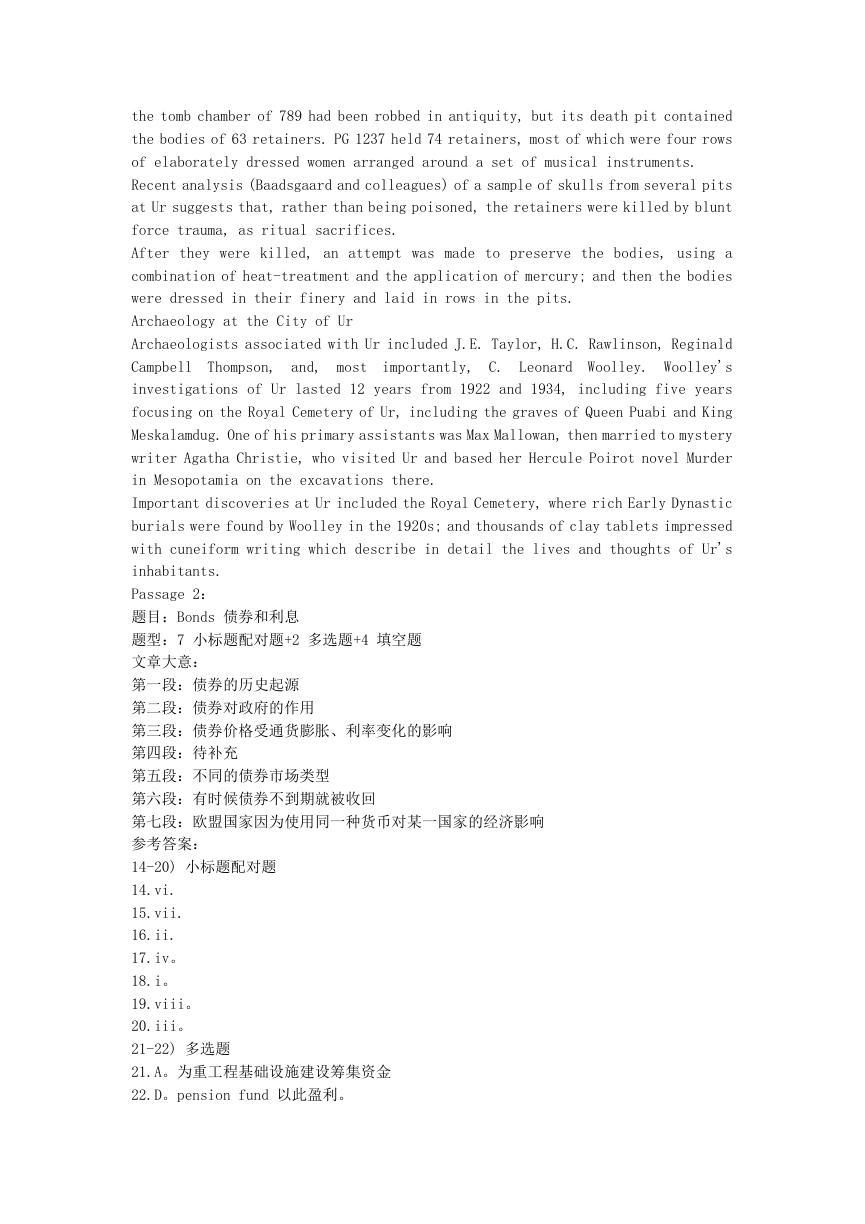
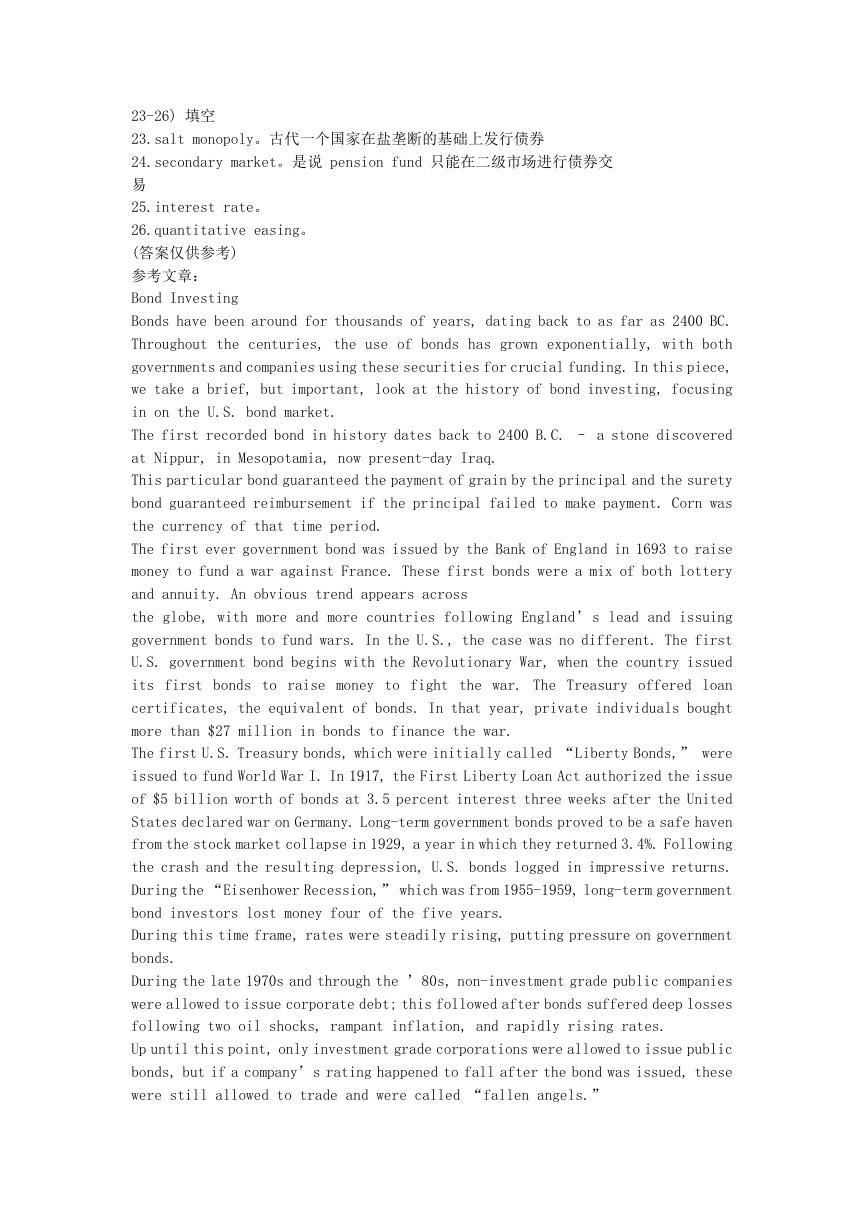
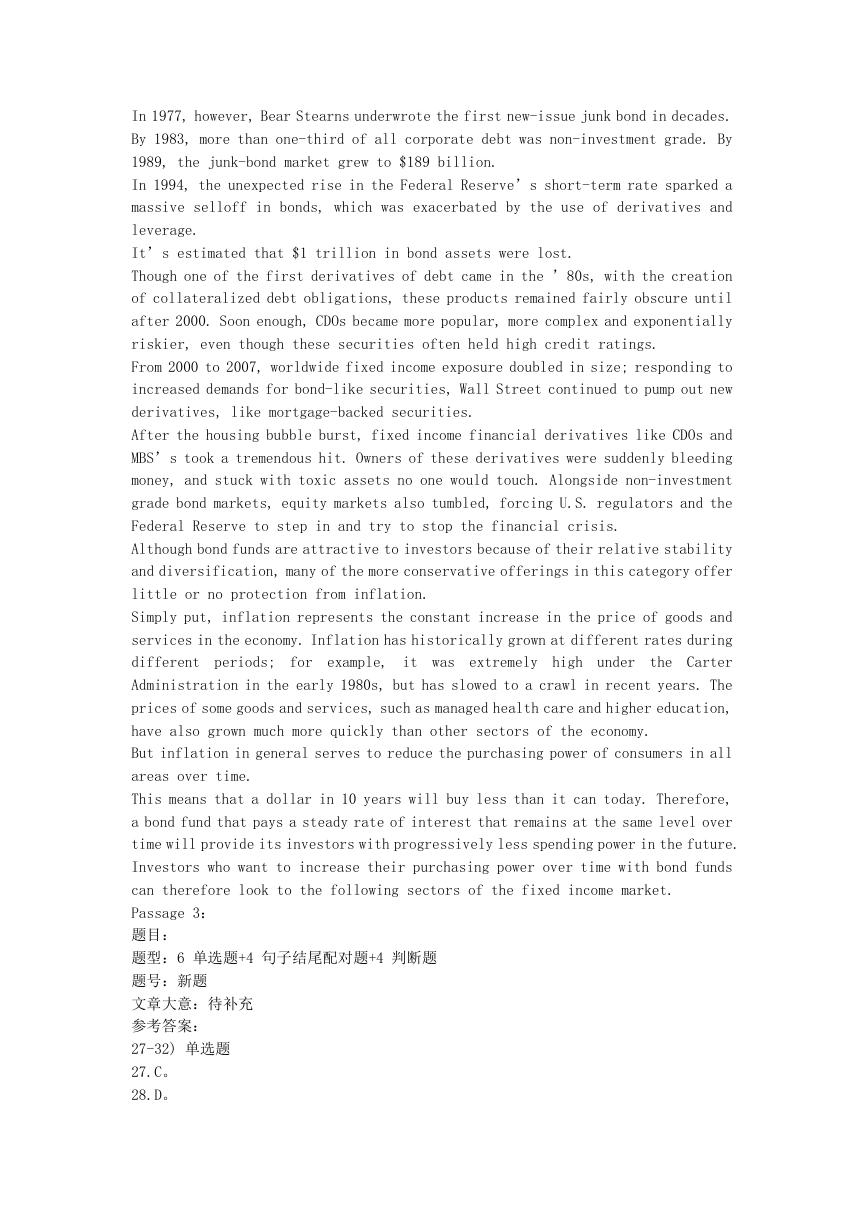
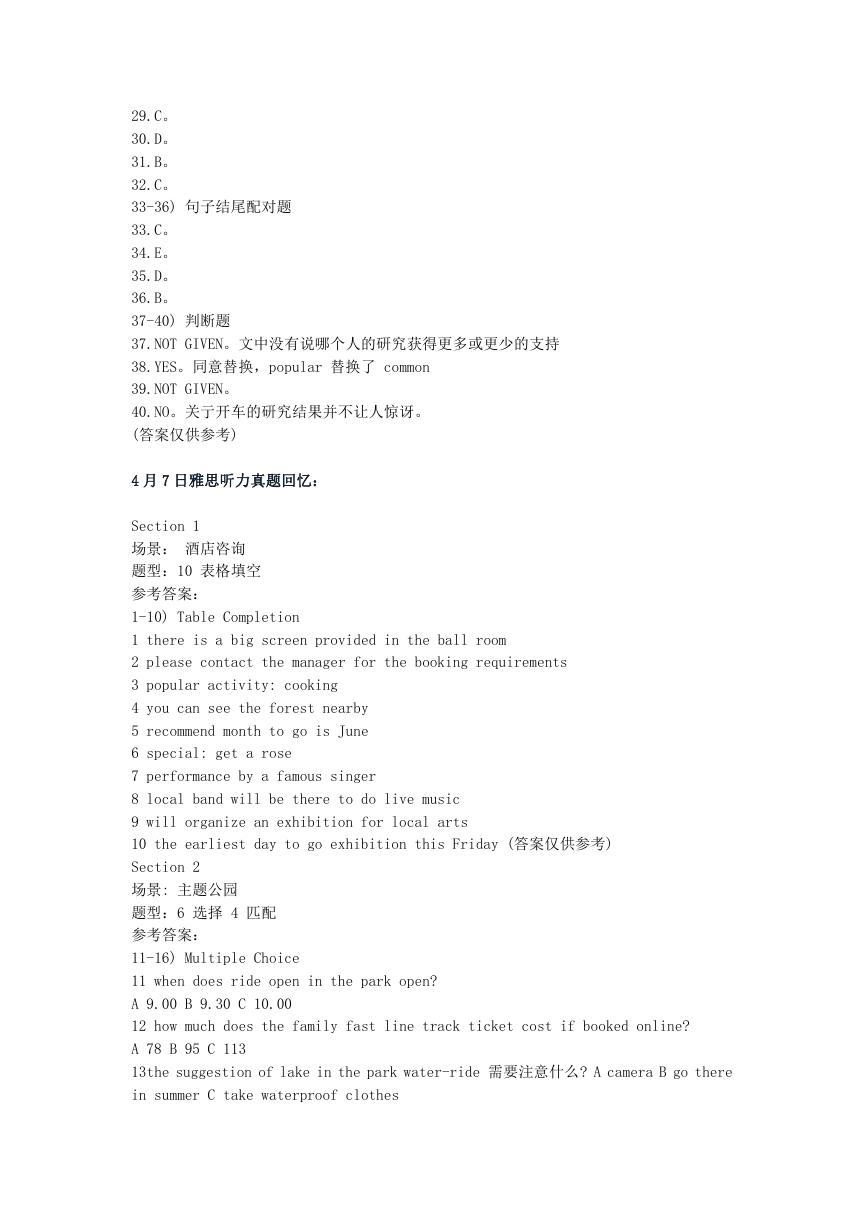
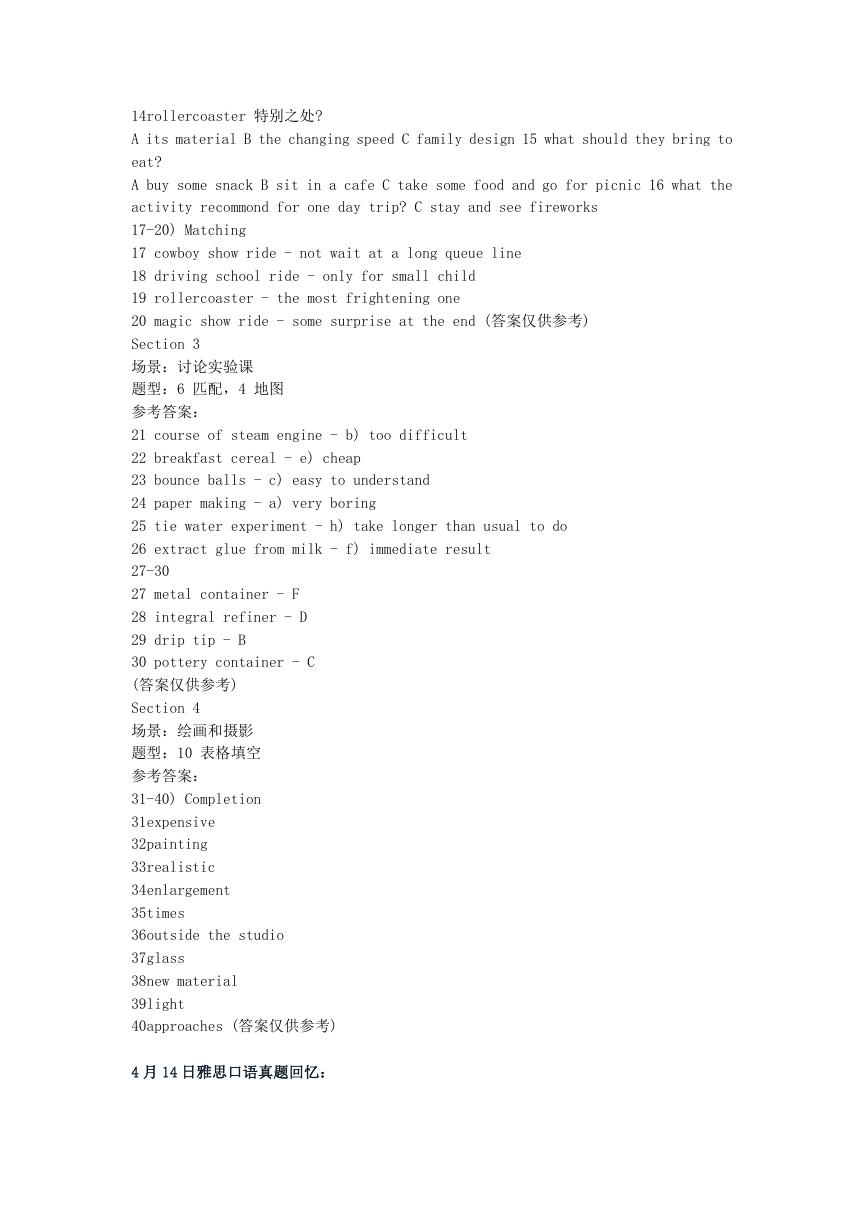








 2023年江西萍乡中考道德与法治真题及答案.doc
2023年江西萍乡中考道德与法治真题及答案.doc 2012年重庆南川中考生物真题及答案.doc
2012年重庆南川中考生物真题及答案.doc 2013年江西师范大学地理学综合及文艺理论基础考研真题.doc
2013年江西师范大学地理学综合及文艺理论基础考研真题.doc 2020年四川甘孜小升初语文真题及答案I卷.doc
2020年四川甘孜小升初语文真题及答案I卷.doc 2020年注册岩土工程师专业基础考试真题及答案.doc
2020年注册岩土工程师专业基础考试真题及答案.doc 2023-2024学年福建省厦门市九年级上学期数学月考试题及答案.doc
2023-2024学年福建省厦门市九年级上学期数学月考试题及答案.doc 2021-2022学年辽宁省沈阳市大东区九年级上学期语文期末试题及答案.doc
2021-2022学年辽宁省沈阳市大东区九年级上学期语文期末试题及答案.doc 2022-2023学年北京东城区初三第一学期物理期末试卷及答案.doc
2022-2023学年北京东城区初三第一学期物理期末试卷及答案.doc 2018上半年江西教师资格初中地理学科知识与教学能力真题及答案.doc
2018上半年江西教师资格初中地理学科知识与教学能力真题及答案.doc 2012年河北国家公务员申论考试真题及答案-省级.doc
2012年河北国家公务员申论考试真题及答案-省级.doc 2020-2021学年江苏省扬州市江都区邵樊片九年级上学期数学第一次质量检测试题及答案.doc
2020-2021学年江苏省扬州市江都区邵樊片九年级上学期数学第一次质量检测试题及答案.doc 2022下半年黑龙江教师资格证中学综合素质真题及答案.doc
2022下半年黑龙江教师资格证中学综合素质真题及答案.doc